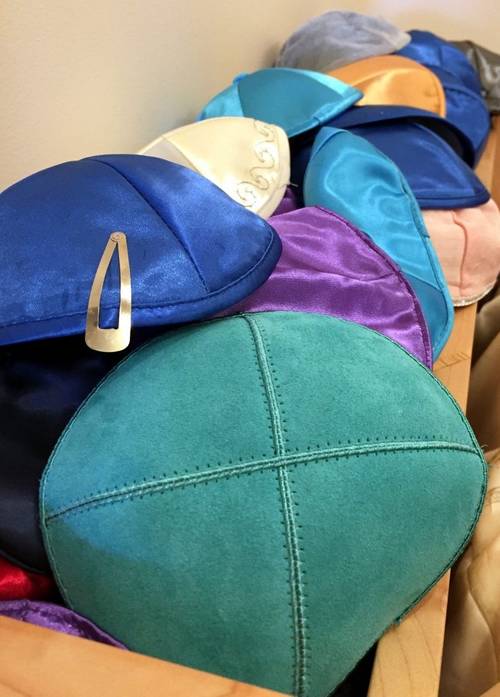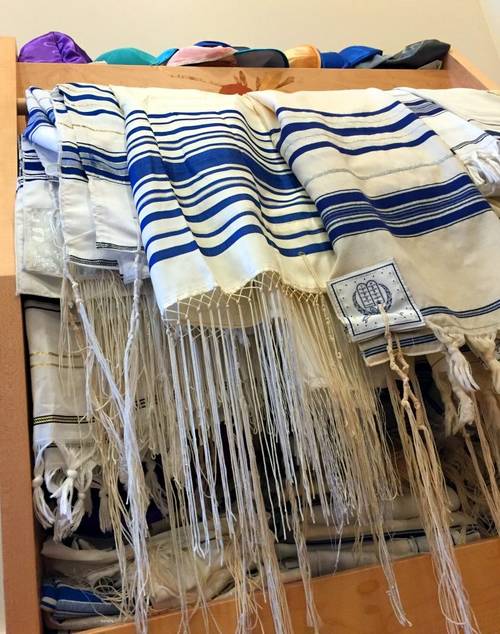Jewish Rituals in the Synagogue
What is a tallit? Kippah? Tefillin? When are they worn?
 What we wear has the power not only to change our appearance but to transform our internal experience. We know this regarding the feeling of putting on a sports uniform, a coat and tie, or a ball gown, and we know, too, the power of donning a costume, playing at being something other than what we are. In his poem about the experience of trying on his father’s tallit as a child, the Israeli poet Yehuda Amichai touches on what can be imbued even through the simplest of garments: a rectangular shawl, with fringes on the corners.
What we wear has the power not only to change our appearance but to transform our internal experience. We know this regarding the feeling of putting on a sports uniform, a coat and tie, or a ball gown, and we know, too, the power of donning a costume, playing at being something other than what we are. In his poem about the experience of trying on his father’s tallit as a child, the Israeli poet Yehuda Amichai touches on what can be imbued even through the simplest of garments: a rectangular shawl, with fringes on the corners.
Jewish tradition offers us any number of items of ritual garb. Throughout Jewish history there have been special belts and wigs, hats and robes. But, the most common, widespread, and well known are those seen most often in prayer settings: the kippah, tallit, and tefillin. Each has its own history, sources, and traditions, and each is traditionally worn at somewhat different times.
Kippah
 The kippah (plural, kippot; Yiddish, yarmulke) is a simple skullcap. Though Jewish tradition does not mandate any specific head covering, in our time the kippah is considered the classic model. It is worn most often when people enter a synagogue or another ritual setting, but in many Jewish communities the tradition has been to keep one’s head covered at all times.
The kippah (plural, kippot; Yiddish, yarmulke) is a simple skullcap. Though Jewish tradition does not mandate any specific head covering, in our time the kippah is considered the classic model. It is worn most often when people enter a synagogue or another ritual setting, but in many Jewish communities the tradition has been to keep one’s head covered at all times.
It is unclear what the origins of covering one’s head are; it is not required by halakhah (traditional Jewish law), and the tradition of doing so has never been universal across Jewish communities. There is no particular blessing said for putting on a kippah. However, the Talmud suggests that covering one’s head was a way of acknowledging God’s presence: “R. Huna son of R. Joshua would not walk four cubits bareheaded, saying, ‘The Shechinah (God’s presence) is above my head.’” And, Maimonides wrote in his Guide for the Perplexed that “the great men among our Sages would not uncover their heads because they believed that God’s glory was round them and over them.”
Traditionally, kippot were worn only by men, but other head coverings were often worn by women as well. Meanwhile, for much of the twentieth century, many Reform communities eschewed head coverings altogether, on the principle that such “ceremonial trappings… can divert our spiritual attention away from the things that truly matter.” However, in our day, in non-Orthodox communities men and women alike have the choice whether or not to take on this practice. Indeed, many people choose to wear a kippah, whether at all times or within ritual settings, for the reverence it represents, because “they want a religious service that ‘looks’ and ‘feels’ Jewish,” or because doing so “draws deeply upon traditional forms of worship and religious life.
Tallit

The tallit (or tallis; plural, tallitot) is a rectangular prayer shawl with strings tied in a particular pattern in its four corners, called tzitzit. Though most often tallitot are made of wool, linen, or silk, they may be made of any fabric. They are most often found in white with black or blue stripes, but, likewise, may be any color or design.
There is no biblical basis for the tallit itself; rather, Numbers 15:37-39 contains an injunction to wear tzitzit on the corners of one’s garments:
Adonai said to Moses as follows:
Speak to the Israelite people and instruct them to make for themselves
Tzitzit on the corners of their garments throughout the ages; let them attach a cord of blue to the tzitzit at each corner. That shall be your tzitzit; look at it and recall all the commandments of Adonai and observe them, so that you do not follow your heart and eyes in your lustful urge.
Rabbinic tradition understood this commandment to mean that one should wear tzitzit on any garment with four corners, and when, centuries ago, it fell out of style to regularly wear four-cornered articles of clothing, it was mandated to wear a tallit under certain circumstances specifically in order to fulfill the biblical precept of donning tzitzit.
Typically, a tallit is worn during shacharit (morning services), except on Yom Kippur, when it is worn in the evening and throughout the day, and on Tisha B’Av, when it is worn only in the afternoon. In many communities, whoever is leading prayer or reading or offering a blessing over the Torah wears a tallit, at any time of day. In most liberal communities, a tallit is worn by someone who has become a bar or bat mitzvah, while in many Orthodox communities, the tradition is for a man to wear a tallit only after he is married. In some communities, while it is customary to wear a full tallit during prayer, people (typically, men) wear a tallit katan (literally, small tallit: a four-cornered undergarment) under their clothes, in order to fulfill the commandment to wear tzitzit at all times.
People choose to wear tallitot for any number of reasons. For some, a tallit is a reminder of the mitzvot (commandments); for others, wrapping themselves in a tallit provides a spiritual and private space for prayer. As Michael Strassfeld writes: “At times it conveys a sense of being enveloped in the surrounding divine, while at other times it simply encloses us, helping us focus on praying.”
Tefillin
 Tefillin (often translated, phylacteries) consist of two black leather boxes, containing parchment with handwritten verses of Torah on them, and straps to hold them on. One is worn on the bicep, with its strap, tied in a particular knot, wound seven times around one’s non-dominant arm and hand; the other is worn on the forehead, just at the hairline.
Tefillin (often translated, phylacteries) consist of two black leather boxes, containing parchment with handwritten verses of Torah on them, and straps to hold them on. One is worn on the bicep, with its strap, tied in a particular knot, wound seven times around one’s non-dominant arm and hand; the other is worn on the forehead, just at the hairline.
The tradition of wearing tefillin comes from a reading of Deuteronomy 6:8, which we read in the prayer Sh’ma-V’ahavta: “Bind them as a sign on your hand and let them serve as a symbol on your forehead.” Rather than taking this and other similar verses only as a metaphor, rabbinic tradition chose to make it a mitzvah to literally bind these words to the hand and head. Indeed, inside the tefillin are pieces of parchment, with verses from Torah which mention this “binding”: Exodus 13:1-10 and 13:11-16, and Deuteronomy 6:4-9 and 11:13-21. They are traditionally worn during shacharit (morning services), except on Shabbat and major holidays, which are considered already to be “signs upon one’s hand,” without the addition of this ritual garb.

Tefillin are uncommon in many Reform communities. As Richard Levy writes, they “are surely the variety of ‘dress’ that is most unsettling to Reform Jews [though] they are not any more intrinsically exotic than a tallit or a kippah.”7 However, because tefillin are worn only on weekday mornings, and few North American Reform synagogues hold regular weekday services, most Reform Jews are not exposed to tefillin except in more “foreign” settings (Orthodox synagogues, genre paintings, etc.). And yet, the blessings for wearing tefillin have appeared in Reform movement prayer books for decades (and, indeed, can be found in Mishkan T’filah on page 28). As Levy writes of his own choice to wear tefillin:
As a kippah makes me aware of the presence of God hovering over me and my thoughts, directing the fruits of my mind upward, the verses of the Sh’ma around my head remind me of the blessing of God who oteir Yisrael b’tifarah, has crowned Israel with glory—not our own glory, but God’s. If our heads move through morning prayers surrounded by the glory of God, how noble might our actions be if we could continue to be conscious that we were swathed in that same glory throughout the day! And how filled with the strength of God’s holiness might be our hands if they could feel in all our waking hours the press of God’s unique sovereignty!
Like kippah and tallit, tefillin have the power to transform our experience, allowing us to make our external appearance a reminder to ourselves about the internal intentions and attitudes we desire. Uniform or costume, commanded or chosen, they are each replete with symbolism—both with the meanings that have been ascribed to them throughout Jewish history and with what we bring to them on any given day.
Prayers of the Jewish Liturgy

